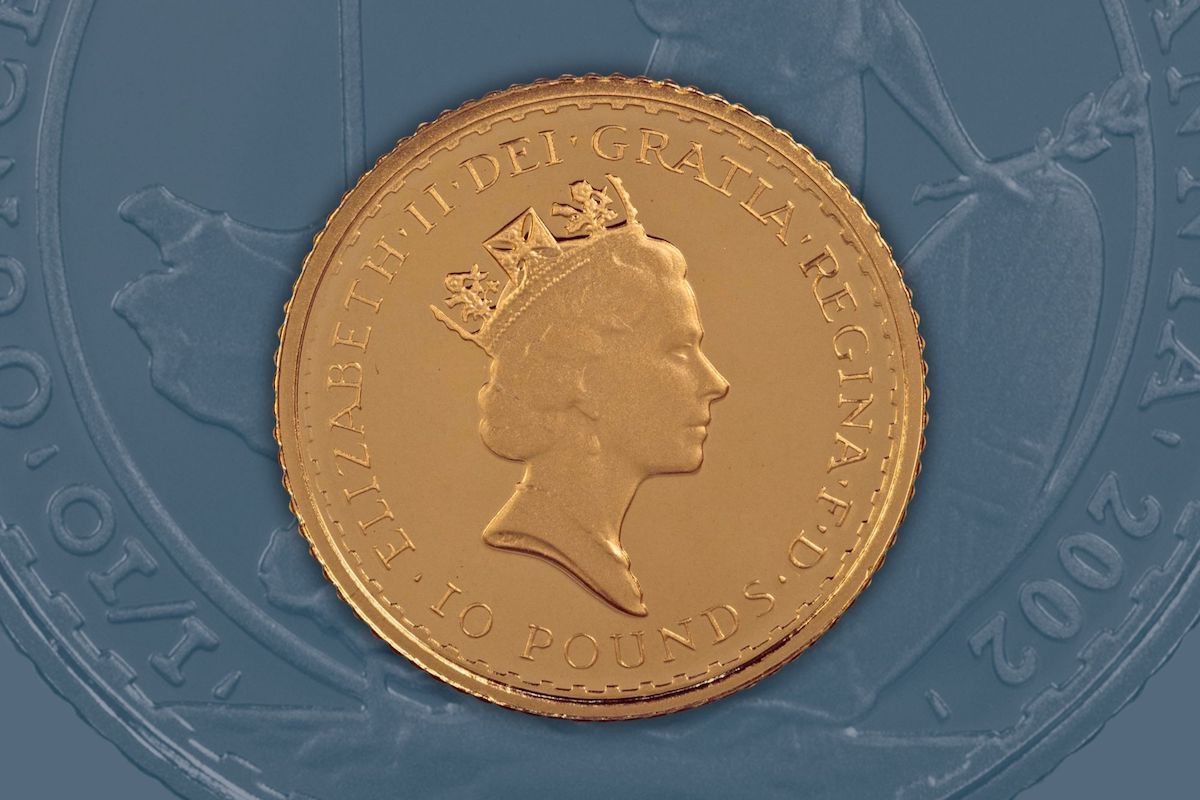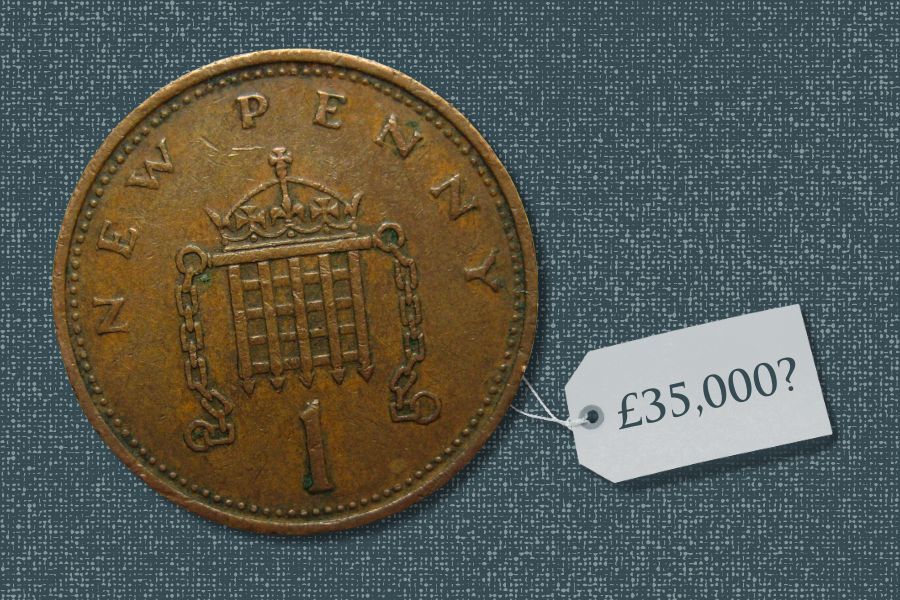
A shocking eBay listing is doing the rounds this week, offering a 1971 Penny for a whopping £35,000 (plus 75p postage).
Could this coin, described as a 'Rare Error', really be worth that much money?
The short answer is no.
However, this eBay listing plays into several myths about early decimal coinage, error coins and scarcity that can trip up new collectors.
Are 1971 New Penny Coins Valuable?
This 'rare' Penny dates from 1971, when Britain switched from the 'old money' of Pounds, Shillings, and Pence to a new decimal system.
The Royal Mint reports that 1,521,666,250 1p coins were issued in 1971 to replace the old 'pre-decimal' coinage that was being withdrawn. This is by far the highest annual mintage for 1p coins since decimalisation.
These newly introduced decimal Penny coins were designed to look different to their predecessors to avoid confusion. The size was reduced from 30 millimetres to 20.3 millimetres, and the old Britannia reverse was swapped for a crowned portcullis. The portcullis was once a heraldic symbol of the House of Tudor but is now closely associated with the UK Parliament.
All early decimal Pennies feature the words 'NEW PENNY' on the reverse, including 1971-dated coins. This was changed to 'ONE PENNY' from 1982 onwards. In 2008, the portcullis reverse was exchanged for a segment of the royal shield of arms, which itself was replaced in 2023 with a new definitive 1p design featuring a hazel dormouse.
While it is still possible to find portcullis Pennies in your change, they are becoming less common. This is because The Royal Mint withdraws old, worn coinage in favour of newly struck pieces. Because of this, it can be difficult to change hunt for early decimal Pennies like the 1971 1p, but they are definitely still around.
If you cannot track one down, you can purchase a 1971 Penny for a very reasonable price. By filtering on eBay for coins that had already sold, we found that buyers can pick up a 1971 1p coin for about £1, including postage. Rolls containing fifty uncirculated 1971 1ps are easily purchased for under £5.
This is a far cry from £35,000, so where has the seller got this figure?
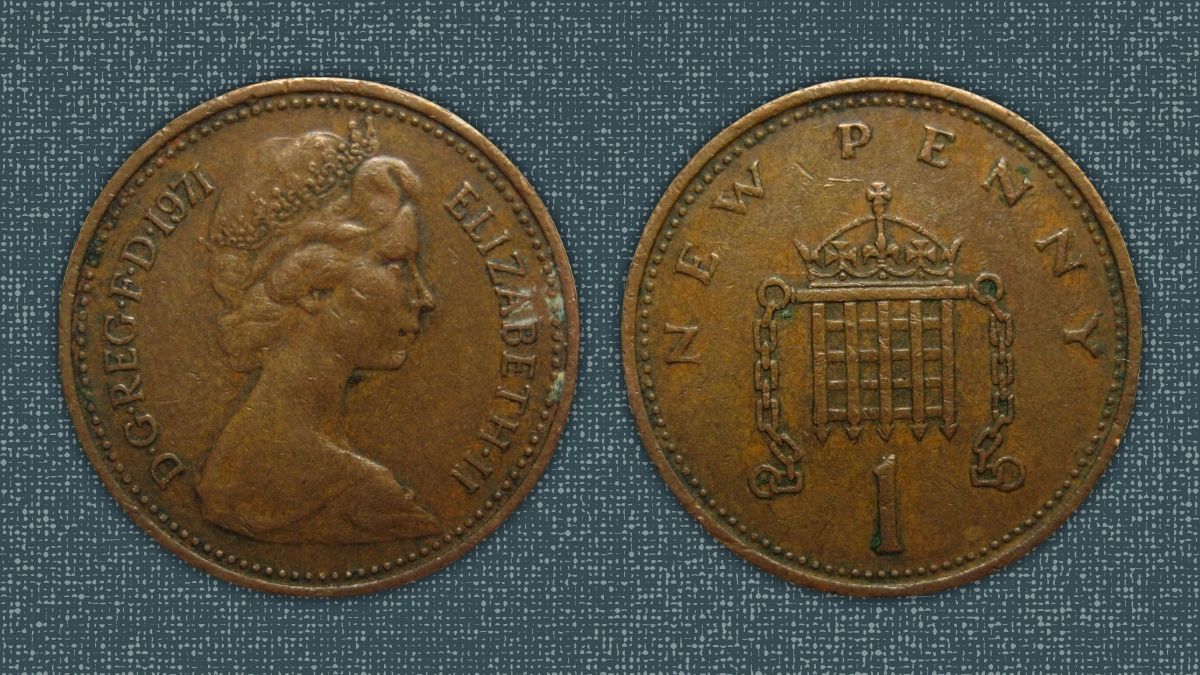
Obverse and reverse of a standard, circulated 1971 Penny: these common coins are not worth thousands of pounds.
Error Coins Versus Damaged Coins
The extraordinarily priced eBay listing identifies many 'errors' to the coin, circled on the photos in red.
This includes a wobbly rim, marks to the portrait of Queen Elizabeth II seen on the obverse and markings to the fields between the lettering and the bust. Marks to the edges are also identified with red circles.
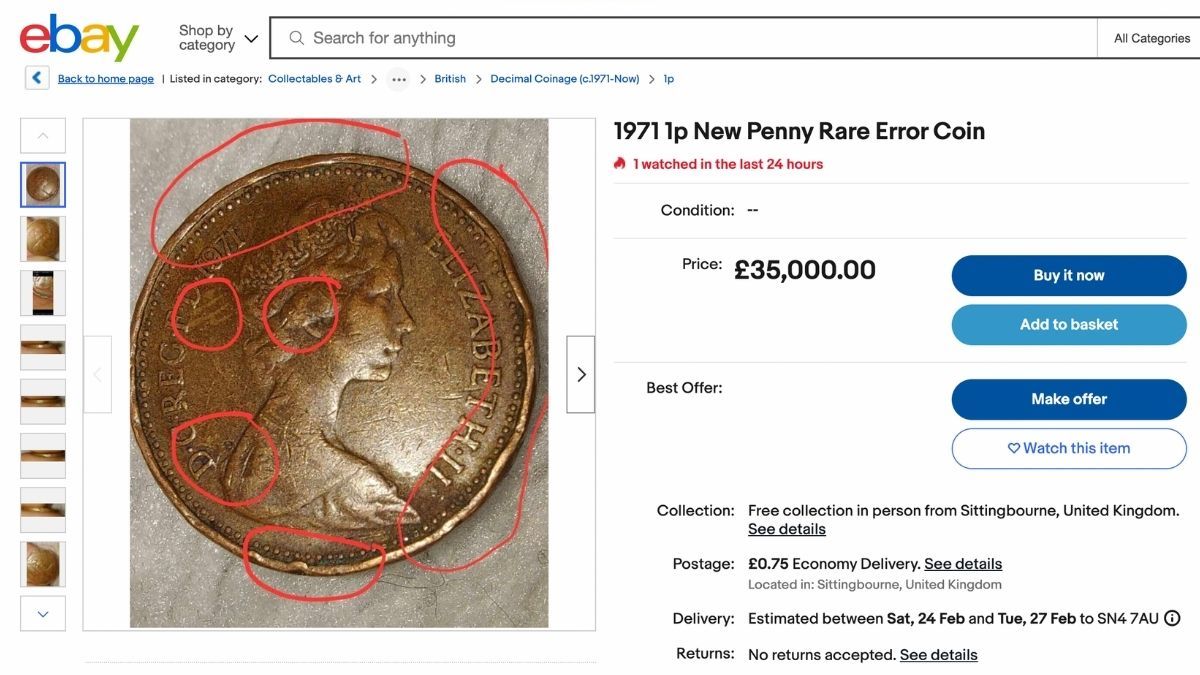
According to the seller, whose username is 'staceyandcats', this 1971 1p shows various errors which justify the £35,000 price tag (credit: eBay/staceyandcats).
The issue is that the things that are 'wrong' with this coin seem to be damage or wear rather than errors. The marks identified on the obverse are typical of an older circulation coin that has been rattling around in pockets and cash registers for more than fifty years. The dents to the edge commonly occur when a coin is put in a washing machine, getting battered and scratched in the process.
When coin collectors talk about 'errors', they usually mean something that went wrong in the minting process before the coin was released into circulation.
Because of the quality control procedures employed by modern mints, real errors are rare and can make a coin more valuable. Damage generally devalues a coin, with pristine examples preferred by most collectors.
Some sought-after mint-made errors include:
Off-centre strikes are a type of manufacturing error that occurs when the dies used to strike a coin impact incorrectly with the planchet, resulting in a coin that is not circular.
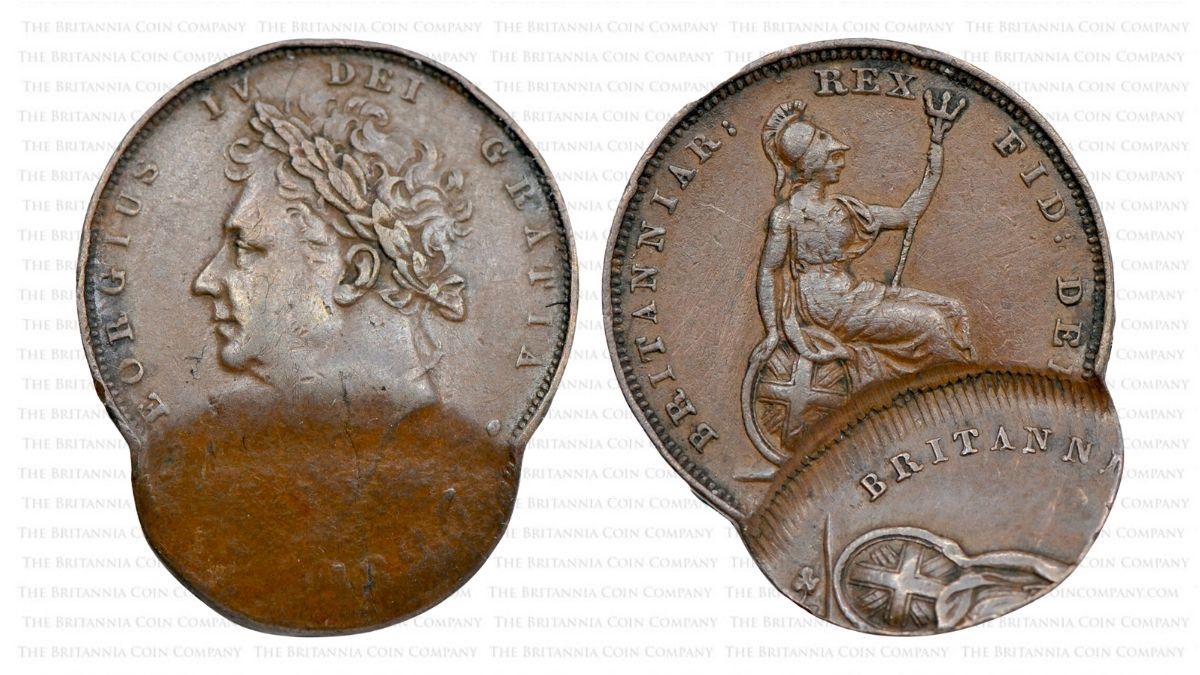
This 1826 copper Farthing shows a spectacular off-centre second strike, an error that can be valuable to coin collectors.
When the wrong planchet is used, a coin can be struck on a blank disc of the wrong metal, though it is easy to mistake corroded or plated coins for rare errors of this type.

This 1990 20p was struck on a bronze 1p planchet, as verified by The Royal Mint Museum and sold at auction for 1,000 times its face value (credit: RWB Auctions).
Mule errors occur when a non-matching pair of dies is used to strike a coin. This often happens when subtly different dies are accidentally swapped, resulting in notable but hard-to-spot errors.

A small number of 2002 tenth-ounce gold proof Britannias were struck with the wrong portrait of Queen Elizabeth II, creating a rare mule error coin.
Rare And Valuable 1p And 2p Coins
There are a small number of 1p and 2p coins that are valuable and worth looking out for.
Undoubtedly, the most famous is the 1933 Penny. Only six of seven 1933-dated coins were produced by The Royal Mint since they had stockpiles from previous years. Collectors have spent nearly a century searching for these supremely rare coins, and their desirability has created a market for replicas and forgeries. The last authenticated 1933 King George V Penny to be offered for sale made a record $240,000 at auction in 2023.
A minting error means that some 1983 2p coins sell for over £1,500. The reverse 1983 2p coins should say 'TWO PENCE', but a limited number were struck with the die from the previous year that reads 'NEW PENCE'. It is only the 1983 coins with this wording that are rare, and it is extremely unlikely that you will come across one in your change. All known examples have been found in promotional collector's sets.
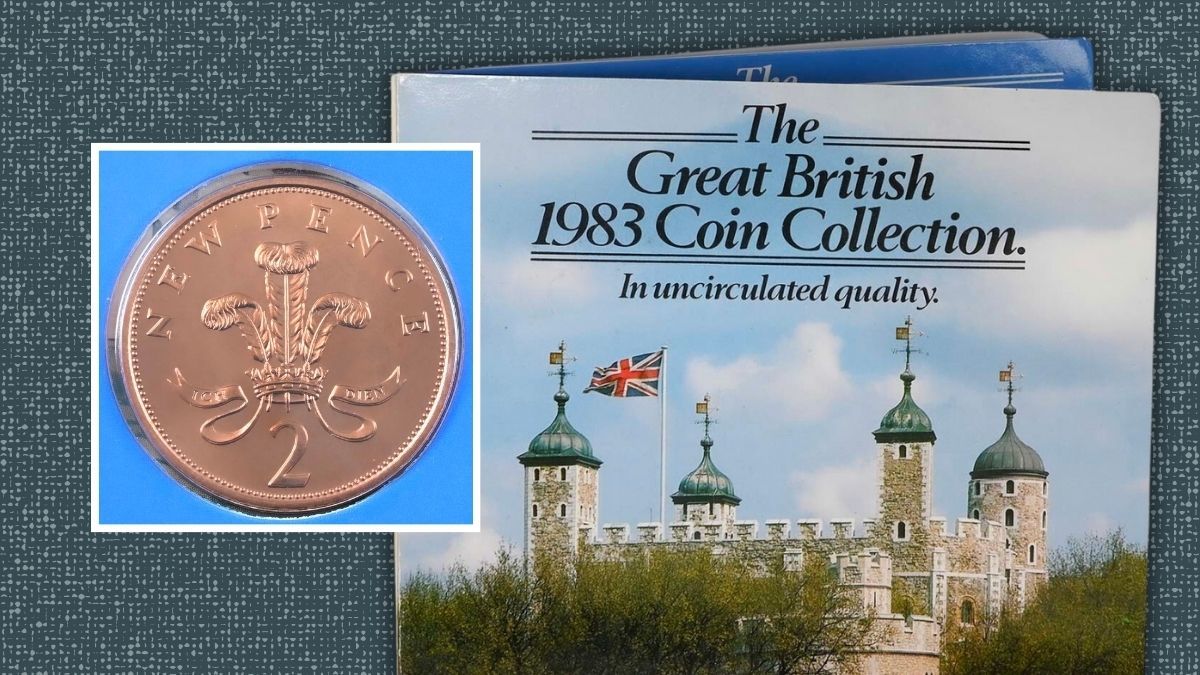
This 'NEW PENCE' 1983 2p coin was found in an eight-coin set produced by Martin & Rossi as part of a drinks promotion.
You might have better luck hunting for a bronze 1992 1p, though these coins are difficult to spot. Most 1992-dated Pennies were made from copper-plated steel, but 78,421 were struck in bronze. The two types of 1992 Penny look very similar, but the rarer bronze coins will not be attracted to a magnet, unlike their steel-cored counterparts. While the bronze coins are significantly rarer, their market value remains under £5, according to recent eBay sales.
Using eBay To Value Your Coins
What the exorbitant price on that battered 1971 Penny proves is that you can put any figure you want on an eBay listing. Outlier listings like this sometimes garner press attention and can lead to a raft of unscrupulous sellers trying to cash in on the hype. One of these sellers might succeed in selling a coin for an inflated price to an inexperienced collector, but it does not mean that a reputable coin dealer will pay you a similar amount of money.
We pay face value for 1971 Pennies or encourage you to spend them. That is because these are common coins with a very limited collector's market. They are definitely not worth £35,000.
If you are using eBay to value items like 1971 Pennies, we recommend filtering for coins that have actually sold and then looking for the average price.
This average eBay sold price might be the amount you could achieve if you sold the same coin on the same platform. From that figure, you need to subtract the postage costs and the value of the time spent creating the listing. It is up to you to decide whether the profits are worth the work.
Report Pricey eBay Listings To Us
Have you seen any strange eBay listings you would like us to debunk? Get in touch via email or drop us a message on Facebook, Instagram or YouTube.
Frequently Asked Questions
1971 Pennies are worth little more than their face value of 1p. While more than 1.5 billion were issued, many have been withdrawn from circulation, making them hard to find in your change. If you need one for your collection, you should pay no more than £1-2, including shipping costs.
1971 1p coins with 'New Pence' on the tails side are not rare. This was the standard design in the 1970s and is not an error. The Royal Mint struck 1,521,666,250 Pennies in 1971, the largest annual mintage since the UK decimalised its currency.
Despite the myths, 1971 Pennies are not particularly rare or valuable. The Royal Mint struck more than 1.5 billion 1p coins in this year though many have since been withdrawn from circulation. 1971 1p coins can be purchased on eBay for less than £1.
1,521,666,250 1p coins were manufactured by The Royal Mint in 1971. More than 1.5 billion were produced to replace old coinage following Britain's move to a decimal coinage system in 1971. More 1p coins were produced in 1971 than any other year since Decimal Day.
Most 1p and 2p coins issued in the decade after Decimal Day in 1971 are very common. These coins have the words 'NEW PENNY' or 'NEW PENCE' on the tails side. The design was modified in the early 1980s to read 'ONE PENNY or 'TWO PENCE'.
The 1933 King George V Penny is undoubtedly the most valuable 1p coin known to exist. One of only six or seven examples minted was sold at auction in 2023 and made $240,000. Experts note that forgeries and replicas of this coin are very common.
1983 2p coins with the words 'NEW PENCE' on the tails side are rare and valuable to coin collectors. A limited number of these coins were minted with the wrong inscription in 1983 and can be found in some eight-coin collector's sets. Most 1983 2p coins read 'TWO PENCE'.

.jpg)
